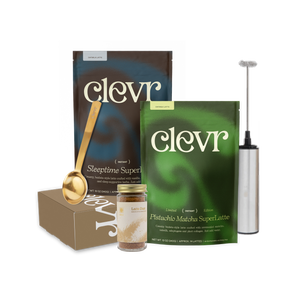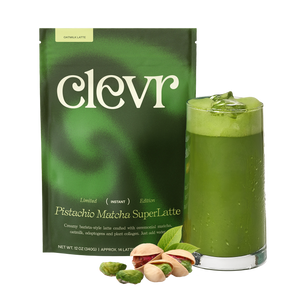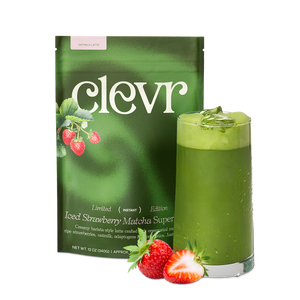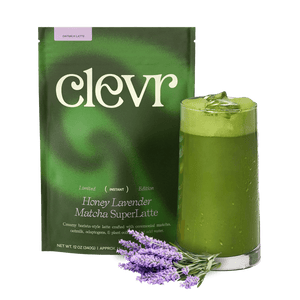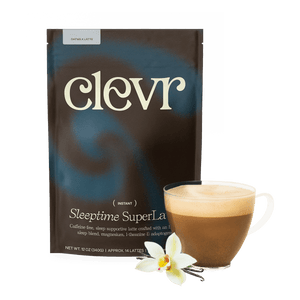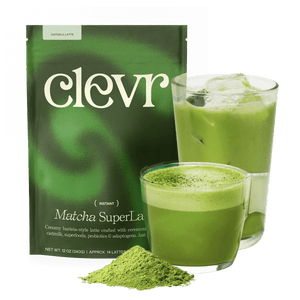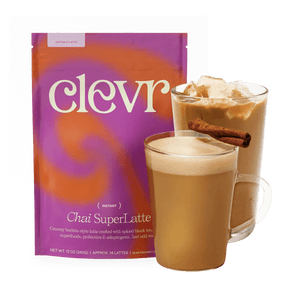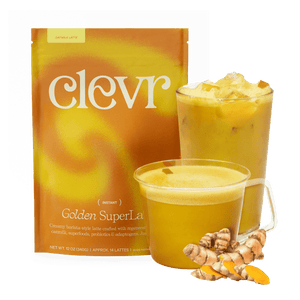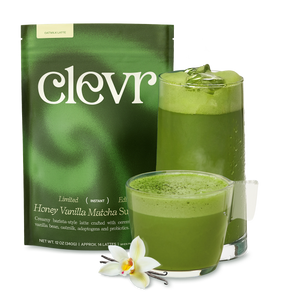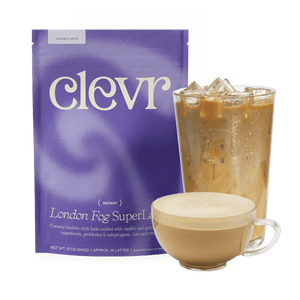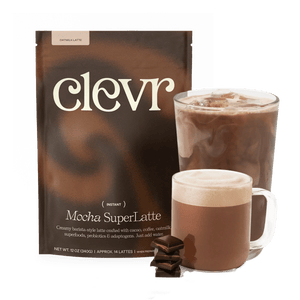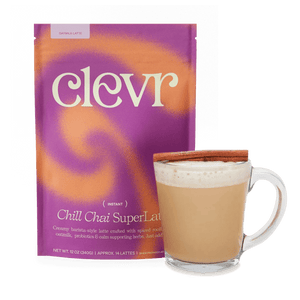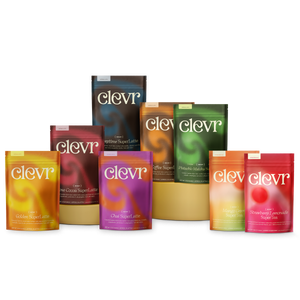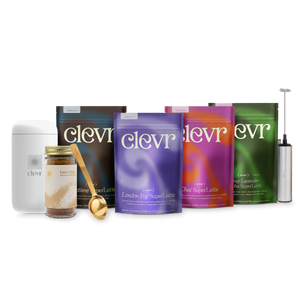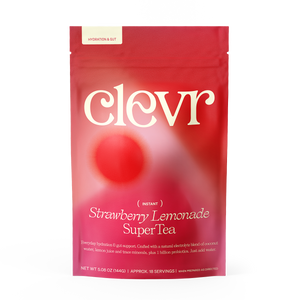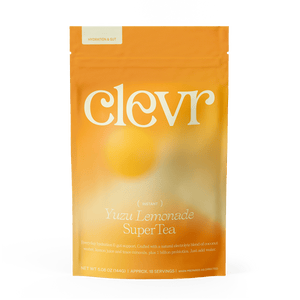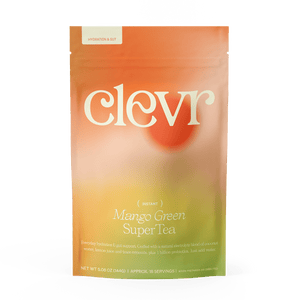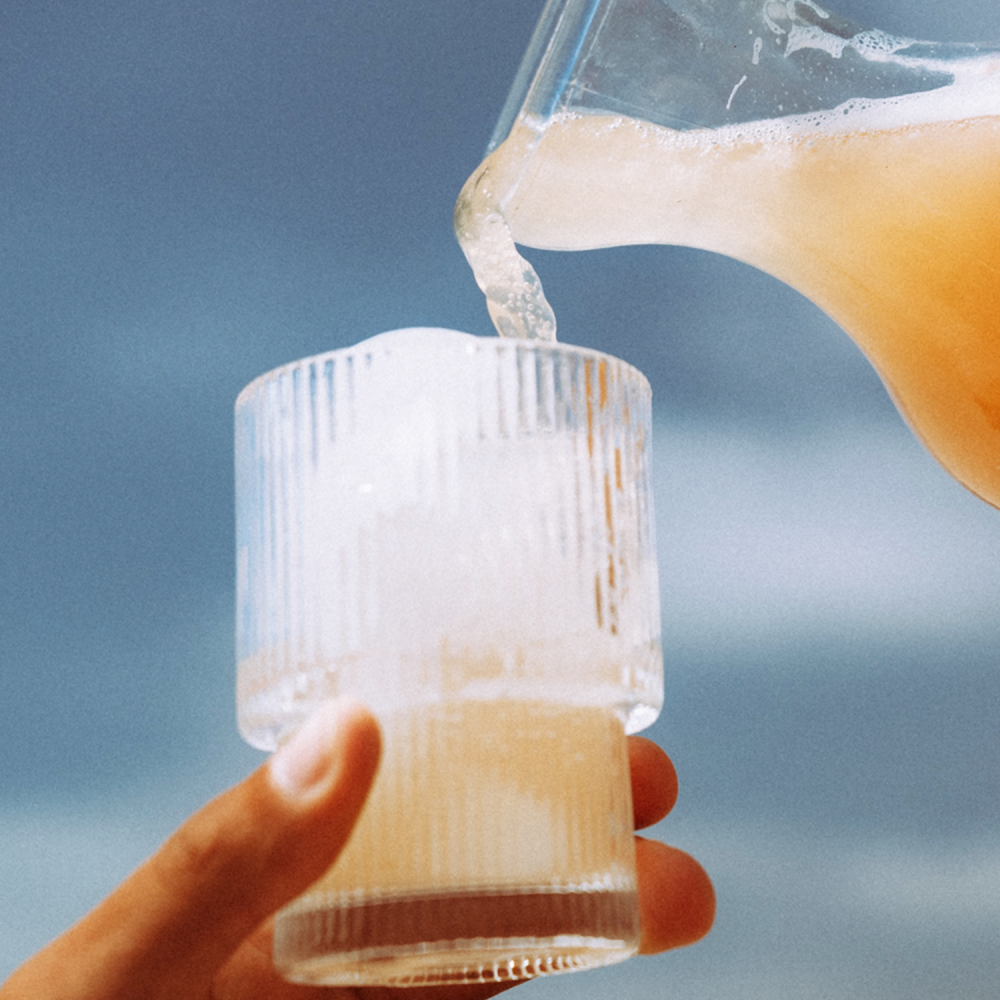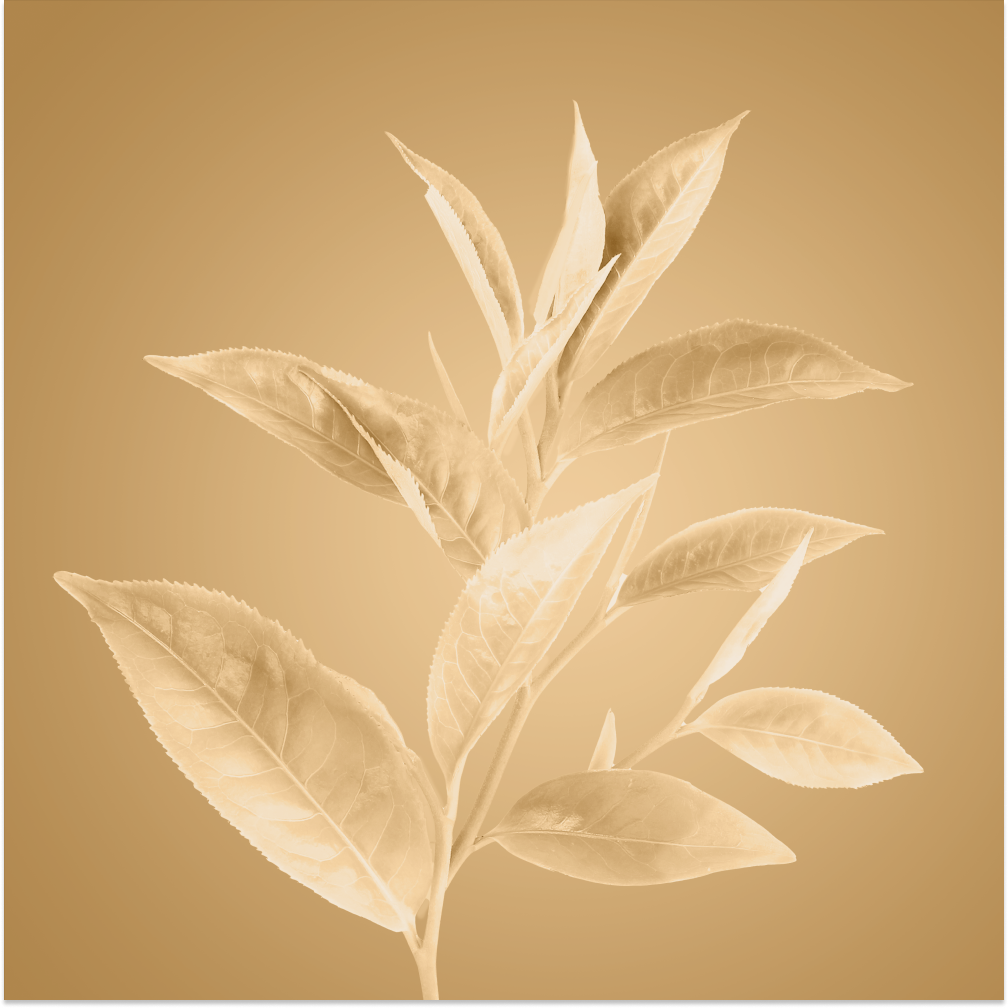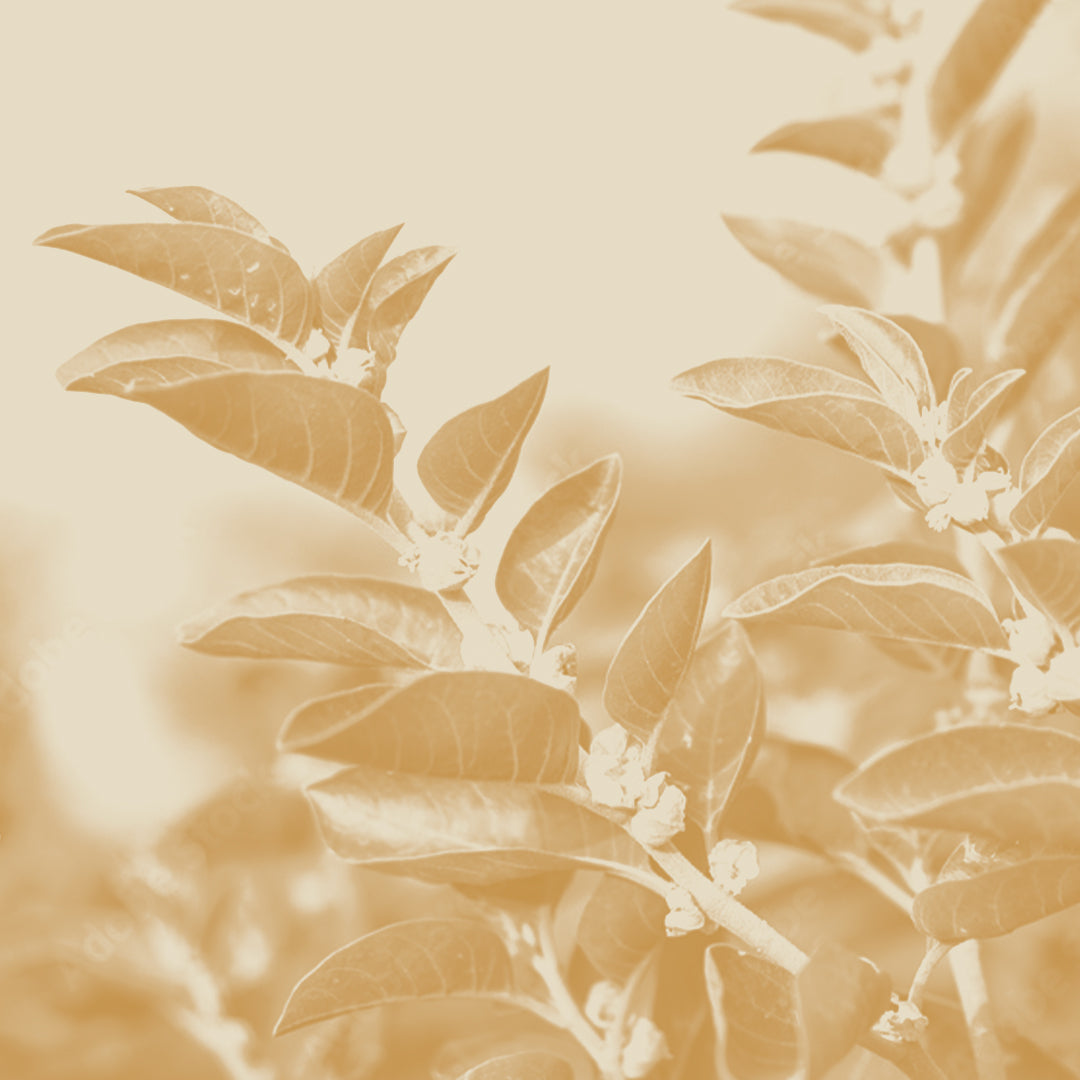
The Scoop on Matcha
Ancient roots, potent antioxidants, and grounded focus — we’re spilling the tea on the all-star ingredient in our Matcha SuperLatte.
For some people, coffee isn’t so much a boost as it is a wave of jitters followed by an energy crash, indigestion, or disrupted zzz’s. But just because your body isn’t rolling out the red carpet for coffee doesn’t mean you have to avoid caffeine completely.
Matcha is a happy medium, a tea with about half the amount of caffeine and loaded with phytonutrients to help your system absorb the perk slowly and smoothly for sustained energy. More potent than other green teas, this variety has unique elements that make you alert and relaxed at the same time. Ready to learn more? Keep calm and read on.
Backstory
Green tea dates back to 3000 BC China but segued into a spiritual practice in 12th century Japan when a Zen Buddhist priest wrote a book about the tea’s medicinal merits (Proceedings of the Japan Academy, 2012; BBC, 2019). It’s said that matcha helped the monks fuel their long meditation sessions (The New York Times, 1994).
The making-of is as ceremonial as the sip. Matcha is made by stone-grounding green tea leaves that are grown in shade — which amps up the umami flavor — into a fine powder, then whisking it with hot water. And its vibrant green hue? That’s courtesy of high amounts of chlorophyll, a green pigment that isn’t just essential to photosynthesis in nature, it’s chock full of antioxidant and anti-inflammatory powers, too (Molecules, 2021).
Benefits
Green tea gets its distinct energy-without-the-intensity vibe from the naturally occurring amino acid L-Theanine, which helps increase your brain’s alpha waves a.k.a. the chill-out waves (Nutrients, 2016). When paired with caffeine, the result is grounded focus with an oomph. Matcha is also packed with Vitamin C and epigallocatechin-3-gallate (EGCG), an antioxidant that supports your cognition, heart, blood sugar levels, and a healthy weight (Journal of the American College of Nutrition, 2007).
What makes matcha a cut above other green teas is its shady growing location, which keeps its health-boosting compounds more intact (Molecules, 2021). In fact, our matcha is cultivated under bamboo-supported shade for about four weeks longer than the typical green tea harvest, concentrating all the beneficial nutrients into the plant leaves, called Tencha. And since you’re consuming the leaves, not just steeping them, quality counts! That’s why our Matcha SuperLatte is made with organic, shade-grown, stone-ground matcha straight from Uji, Japan.
Beyond the Mug
Tea is just the beginning. Matcha can be incorporated into cookies and cakes, granola bars, and even salad dressing. For a quick boost, top old-fashioned oats with a mylk of your choice, fruit, and superfood toppings like chia seeds for matcha oatmeal. Top of the morning indeed.
Ask the Formulator...
Clevr CEO and Formulator Hannah Mendoza answers your burning questions.
Why is stone-grinding matcha so special?
“Machine grinders yield massive quantities, but that high-powered equipment also generates a significant amount of heat that impacts matcha’s natural, earthy aroma. The traditional Japanese granite stone mills, on the other hand, use a slow, time-tested technique that grinds the Tencha leaves without burning them out. The result is a high-quality matcha powder that retains its nutrients, along with its aroma and flavor.”
Is your matcha ceremonial grade?
“No, but our organic matcha is harvested from the same plants and farms as top-tier ceremonial matcha — directly from small farmers in Uji, Japan who use shade-grown and stone milling techniques. The only difference is our leaves are harvested on a slightly different part of the tea plant.
Ceremonial grade matcha is meant to be enjoyed as a thick tea (called koicha) during a formal tea ceremony. It’s prepared purely and simply with water, which means that in traditional Japanese culture it would never be blended into a latte. The U.S. market has capitalized on the trend of labeling ‘ceremonial grade matcha’ with matcha tea powders that we believe would never stand up to our quality and rigorous sourcing standards. But we’ll let our taste and color speak for themselves ;)”
